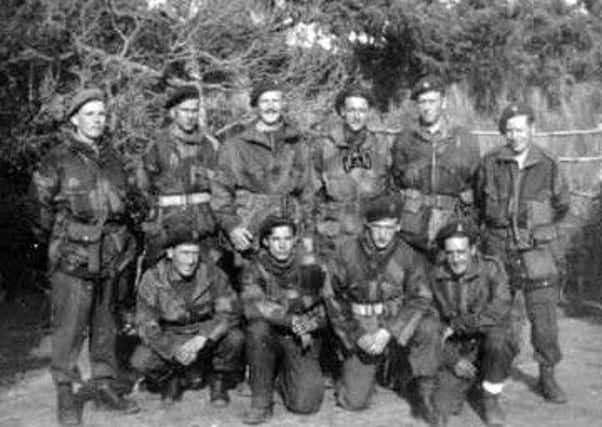Mystery surrounds death of SAS man on daring raid


However, it was clear that tunneling would not be a part of World War Two and when stationed in Algeria, he volunteered to join the fledgling Special Air Service (SAS), the brainchild of Scotsman David Stirling and Irishman Paddy Mayne.
William was trained in the use of explosives and demolition – skills which were much sought after, and of good use in the type of hit and run tactics employed by the SAS.
Advertisement
Hide AdAdvertisement
Hide AdDuring the evening of January 7, 1944, Dodds was one of a four man team (Raiding party 5) dropped by parachute into German occupied Italy. (Italy had surrendered in 1943 and many anti-fascists now fought with the Allies).
Leading the party was Captain John Gunston. The others were Bombardier Albert Pugh and Private Herbert Loosemore. When they landed they found to their horror that the snow was three to four feet deep.
Their mission, codenamed Operation Maple (Driftwood), was to sabotage the train line running between Urbino and Fabriano, in support of the landings up the coast at Anzio beach head. Once this was done they were to evacuate by sea on the night of January 25-26. On the evening of the 25th, the Royal Navy turned up, but there was no sign of the raiding party.
The mission was running over due to the weather and other factors. In early February, a Private Cook, who was making good his escape from the enemy, bumped into Captain Gunston near the village of Fermo.
Advertisement
Hide AdAdvertisement
Hide AdCaptain Gunston said he still had one more task to complete, then he intended evacuation by sea. This task was subsequently carried out and Captain Gunston and his party of eight parachutists (they had been joined by Party 6) were seen on February 4 at Fermo.
They had stayed in the area for far too long and the chances of capture increased by the day. Despite this it was not until March 7 that an attempt at escape was made, at Porto San Giorgio, 35 miles to the south of this area.
Captain Gunston (an excellent amateur sailor) and his men including Dodds were last seen boarding a 22 foot boat, very small indeed, and the weather was poor. A Force 6 wind was blowing and large waves pummeled the boat as she made out to sea.
To make matters worse the Commandos did not carry wireless sets, so contact with the Navy was impossible.
Advertisement
Hide AdAdvertisement
Hide AdAlso Hitler had decreed that any Commandos captured was to be executed. Rommel had refused to carry out this order in North Africa, but there was to be no such reluctance on mainland Europe.
Unbeknown to the men, orders had been given to the Royal Air Force to treat any shipping in the area as hostile and to attack at will. This was not passed on to the SAS men.
Sadly this was the last time any of the men were seen alive. Their fate is shrouded in mystery. Some believe that the boat was swamped in heavy seas and that all drowned, but another theory paints an entirely different, much more sinister picture.
A German intelligence report was discovered after the war stating that Captain Gunson, Sgt Benson (Party 6) and Private Looseman had been captured by the SS when they washed up on the shoreline after abandoning their boat. They were interrogated and subsequently executed. Their bodies then disposed off at an undisclosed location to cover up the war crime.
Advertisement
Hide AdAdvertisement
Hide AdAll of the raiding party were posted missing and initially William Dodd’s next of kin, Betty Crang, received a telegram saying he was a prisoner of war. Sadly this was later countermanded when it was declared that he, along with the rest of the patrol, were missing. It was not until after the end of the war in June 1945 that he was declared missing, presumed to be dead.
The mission was deemed to be of limited success and ‘lessons were learned’.
William Dodds and his comrades are commemorated on the Cassino Memorial in Italy. He is also commemorated on the SAS Memorial at Doune, Perthshire.